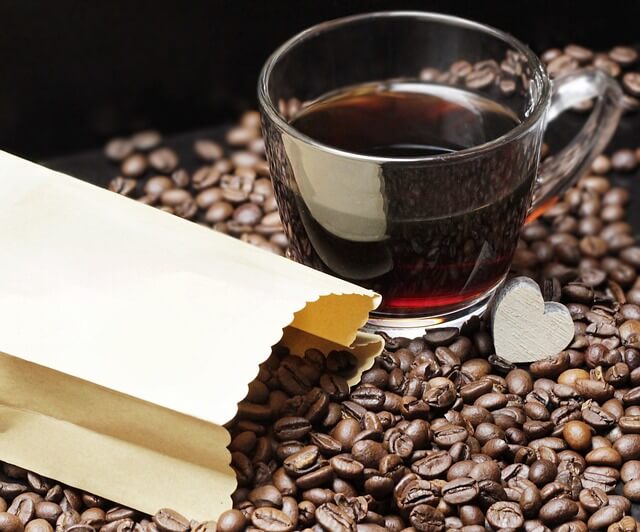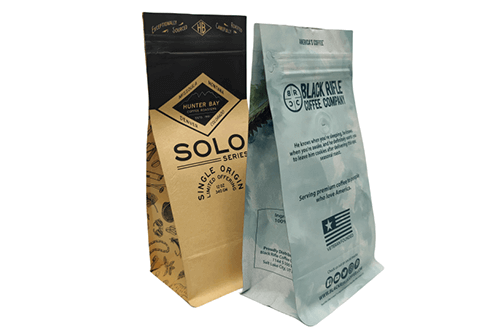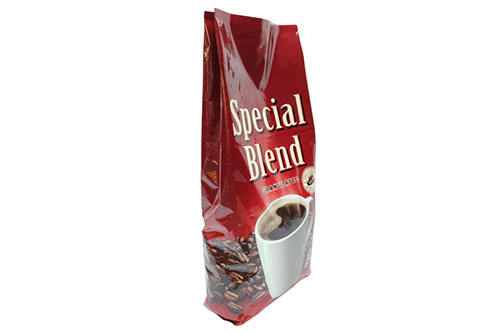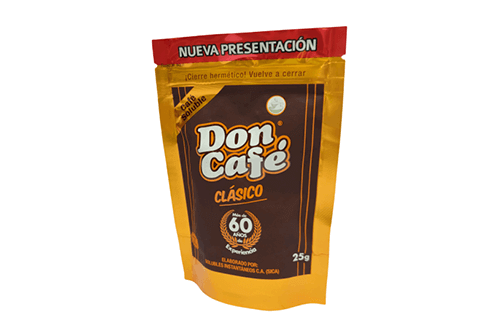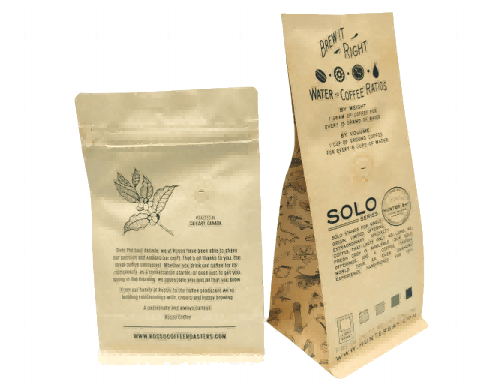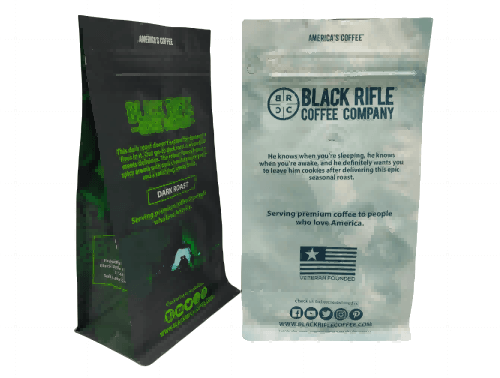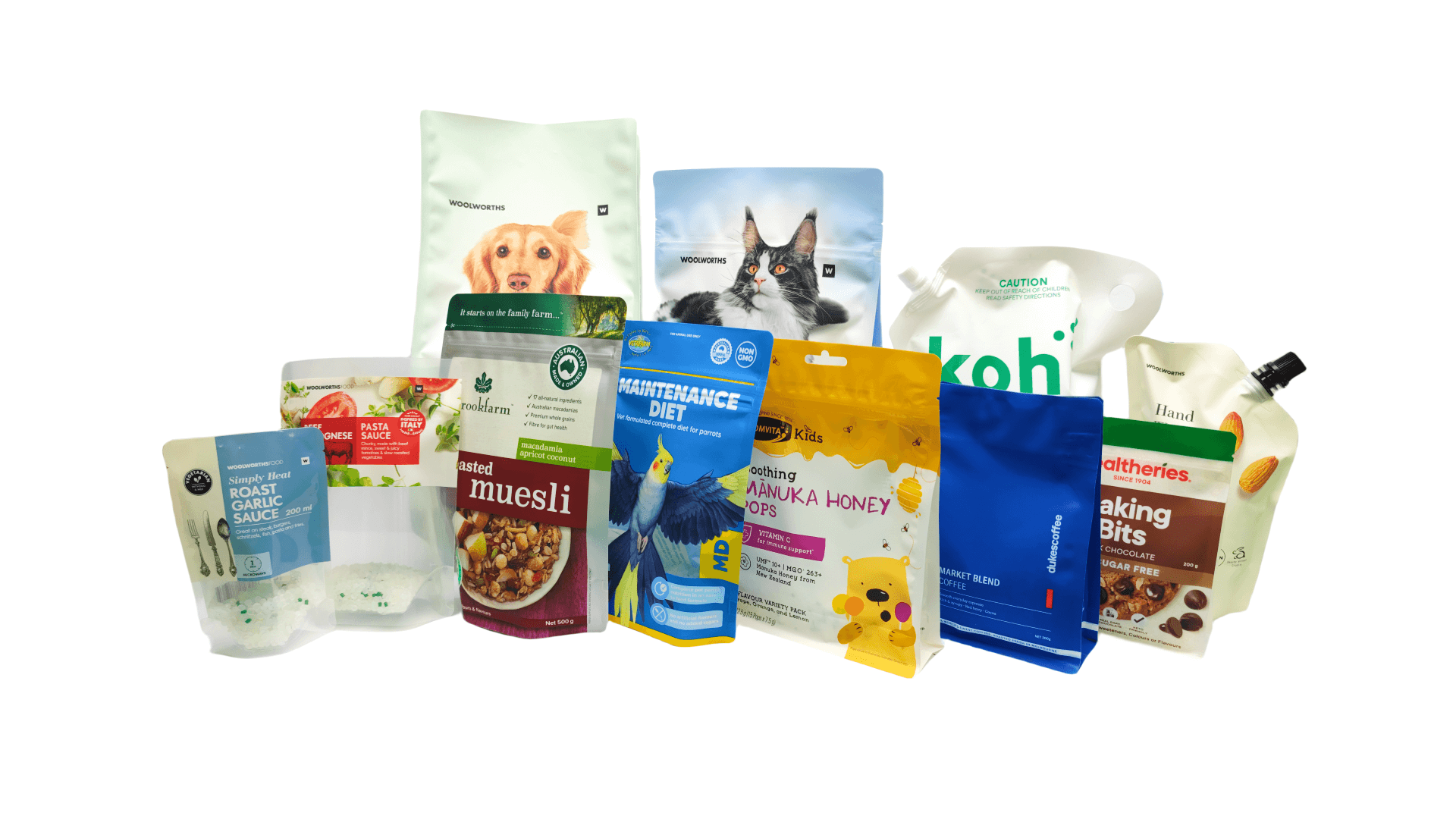Steeping Sustainability: The Emerging Popularity of Eco-Friendly Coffee Bean Bags
More and more, coffee is becoming more integral to people’s daily lives. Correspondingly, there has been a rising need for coffee packaging, such as coffee bean bags, and coffee cups.
Coffee Packaging Market Size
The growing demand for coffee, the rising consumer preference for sustainable tea and coffee packaging, innovative efforts by manufacturers, and supportive policies for manufacturing industries all are driving the expansion of the global coffee packaging market.
Coffee packaging sales analysis shows that as demand for coffee increases, coffee packaging is also evolving in line with changing consumer needs.
The past decade has witnessed the growth of global coffee consumption culture, as evidenced by the expansion of major global coffee chains like Starbucks, Costa Coffee, and many other brands.
Various factors are positively driving the long-term growth of the global coffee packaging market.
- Customer Demand for Sustainable Packaging Materials is Increasing
It’s encouraging to see more consumer demand for packaging that can be recycled.Traditionally, plastic was the dominant material for coffee packaging. However, there is now a shift toward using more sustainable packaging materials like paper and other recyclable packaging materials.
Plastic packaging materials take a very long time to recycle and break down very slowly in the environment.
Pouch coffee bags made from barrier paper and aluminum foil are becoming an increasingly popular packaging option for coffee in the global market. Recyclable coffee bags may also gain more favor compared to conventional plastic coffee bean bags.
- Pouches and Bags are Widely Used for Coffee Packaging Solutions
Bags and pouches are the most commonly used coffee packaging solutions now. Their lightweight, flexible, and space-saving qualities make them especially suitable for coffee packaging.They use 75% less material than other packaging types. They are multilayered for leak and damage prevention. Such as paper outer layer with an inner aluminum layer, and structure PET/AL/PE.
There is significant variety in the types of pouches and bags utilized for coffee packaging, like valve coffee bags, coffee bags with clear windows, and other innovations including bags with resealable zippers, compostable coffee bags, and bags with custom graphics/designs for branding purposes.
- Research by FMI
The coffee bags market is anticipated to flourish at an average CAGR of 5.2% between 2023 and 2033.The market is expected to hold a market share of US$ 1022.8 million by 2033 while the market is likely to reach a value of US$ 616.1 million in 2023.
The global coffee bags market is projected to grow 1.7x over the upcoming decade.
The Types of Coffee Bean Bags
The growing global coffee packaging market, innovative efforts from manufacturers, and new flavored coffee products launched by various brands, which have increased market appeal and sales of coffee packaging, have led to greater diversity in the types of coffee bags available.
The wide range of bag styles available for coffee packaging, allows each option to fulfill distinct purposes and appeal to different audiences.
Flat Bottom Bags
Flat Bottom bags have a flat bottom and stand upright, providing stability, makes it easy to stack on store shelves and transport.
Quad Seal Bags
Quad seal pouch has four sealed corners and a flat, square bottom that allows it to stand upright on store shelves.
The four side seals of the pouch provide extra strength and durability to the packaging, which makes it suitable for heavier products or products that require more protection.
Stand-Up Pouches
Stand-up pouches are an excellent packaging option for coffee. They take up less space than rigid containers, making them convenient for storage and transport. Suitable for lightweight packaging.
The traditional coffee bag material is multi-layer, such as PET/AL/PE, Matt Varnish PET/AL/PET/PE, PET/PE, etc.
The outer layer of PET provides printing. AL layer supplies a high barrier to protect coffee beans from moisture, light, and oxygen, ensuring product freshness. Inner PE sealing layer.
Paper Coffee Bags
Kraft paper coffee bags are eco-friendly and have a natural, rustic appearance. They are often used for specialty or artisanal coffee packaging.
Traditional coffee bag materials typically consist of ink/paper/adhesive/MPET.
Printed paper on the outside provides branding and labeling information. The ink is applied directly onto the paper.
PET solves an issue with paper alone – its permeability because of its waterproof and moisture-blocking properties. The PET inner lining prevents water and moisture from damaging the coffee grounds. It increases the stiffness of paper coffee bags at the same time.
The ink applied on the paper directly can easily scratch or rub off over time. To address this, an improved material structure is used, which is BOPP/Kraft paper/PET/AL/LLDPE.
Matte BOPP film is applied as the outermost layer, providing a smooth, scratch-resistant surface that preserves high print quality. It maintains the bag’s premium appearance while protecting the branding.
Aluminum foil is incorporated to further increase the barrier against water, oxygen, and other elements
The multiple layers, including paper, plastic, inks, and adhesives, have made traditional coffee bags challenging to recycle due to their composite construction. New designs aim to use more sustainable materials that can be easily separated and processed.
Valve Coffee Bags
The degassing valve coffee bags feature a small valve or vent on the bag. It allows gases and air to escape from the bag as the coffee releases carbon dioxide gas naturally during the resting process after roasting. This prevents the bag from puffing up.
By regulating the release of gases, the valve helps preserve freshness inside the bag by maintaining an equilibrium between the interior and exterior pressures.
Coffee bags with valve utilizes the venting system to release gases from the coffee without letting air in or moisture out, thereby prolonging the freshness and quality of the beans/grounds inside. It’s a simple innovation that makes a big difference in coffee shelf life.
Tin-Tie Coffee Bean Bags
Tin-tie coffee bean bags feature a built-in metal tie closure, allowing consumers to reseal the bag after each use.
The tin ties for coffee bags form a tight seal around the valve to prevent air/moisture from getting in or out, while still allowing gases from the coffee to escape through the valve.
Tin tie usually metal or plastic material, helps it maintain its shape and sealing function over long periods of storage.
They have a vintage, nostalgic look that appeals to consumers.
To choose the right type of coffee bag, we should pay attention to the type of coffee, desired shelf life, and aesthetic preferences. Each coffee bag type has its advantages, serves a distinct purpose, and contributes to the overall coffee packaging bag landscape.
Single Serve Coffee Stick Pack
The coffee stick pack is single-serving, individualized packaging for instant coffee. It is shaped like a narrow stick or sachet.
These stick packs provide convenience and portability for consumers who want a quick and easy way to enjoy their coffee on the go.
The stick format is well-suited for various types of instant beverages, including coffee, tea, and other powdered or granulated drinks.
- Singel serving ensures consistency in flavor and strength.
- The lightweight and compact properties make it easy to travel or work.
- The stick format can easily tear open and have a hassle-free coffee experience.
- Customizable branding for coffee stick packs, allows companies to showcase their logos and designs on the packaging.
- Since each stick contains a single serving, less risk of wasting coffee compared to larger packaging that will be opened at once.
- Hotels, airlines, and events where providing individual servings is practical and efficient to use coffee stick packs.
Single-serve coffee stick pack is popular because of its convenience, especially when instant coffee is the preferred choice.
They cater to individuals who appreciate the simplicity of a single-cup portion without sacrificing the quality and flavor of their coffee.
The individual stick packaging allows for a fresh cup of coffee anywhere and anytime without the mess or cleanup of loose grounds or a full pot.
Coffee Sachet Packaging
Coffee sachet packaging is small, sealed, and individualized.
Coffee Sachets are convenient, single-serving units that contain a pre-measured amount of coffee, making them ideal for quick and easy preparation.
The coffee sachet packaging is widely used for various types of coffee, including instant coffee, ground coffee, or coffee blends. As drip coffee continues to rise in popularity, the single-serve coffee sachet packaging is also used for the outer packaging of drip coffee products.
By using a sachet-pack style bag rather than traditional bulk packaging for ground coffee beans or pre-portioned filters, producers can appeal to the on-the-go lifestyle embraced by many coffee drinkers today.
This single-cup packaging allows for an easy brew of fresh drip coffee anywhere, helping to fuel busy individuals without the need for a full pot. The sachet-style outer wrap maintains freshness and convenience for drip coffee just as it does for the instant coffee sachet.
Recyclable Coffee Bags
SUSTAINABILITY, RECYCLABILITY, and ECO-FRIENDLY are increasingly important considerations for consumers worldwide now.
Recyclable coffee bags are environmentally friendly and easily recyclable. Traditional coffee bags are hard to recycle because of their multi-layer materials, such as PET/AL/PE. The PET and AL are both hard to separate and break down.
The recyclable coffee bags are better for the environment due to the single-layer materials that make the bags easier to recycle. It helps reduce waste and promotes sustainability. The goal is a packaging solution that protects the coffee and the planet.
Mono Material Construction Contributes to Coffee Bag Recycling
Mono materials include polyethylene (PE) or polypropylene (PP), both of which are widely accepted by recycling facilities.
At KDW, KanRe™ HBE stands for high-barrier polyethylene, which is a recyclable material composed of multi-layer polyethylene polymer.
HBE has excellent barrier properties that block oxygen and water vapor very effectively, helping extend the shelf life of products.
The material is suitable for containing drinks, condiments, and other perishable items as it slows down spoilage from elements in the external environment.
Its multi-layer polyethylene composition provides an eco-friendly solution for preserving freshness during transport and storage.
| Thickness | 70-250 micron |
| Residual Solvent | ≤5.0 mg/m2 |
| WVTR | ≤8.0 g/m2/24h |
| OTR | ≤5.0 ml/m2/24h |
| Heatsealing Strength | ≥20 N/15mm |
| Pressure Resistance Test | 50kg*1min no leakage |
| Drop Test | 1.0m*2times no leakage |
Sterilization Methods for KanRe™ HBE Sustainable Coffee Bags
- pasteurization
Pasteurization involves heating a liquid, usually a food or beverage, to a specific temperature for a predetermined period and then rapidly cooling it down.The primary objective of pasteurization is to destroy or inactivate harmful microorganisms (such as bacteria, viruses, and yeasts) that may be present in the liquid, thereby extending the product’s shelf life and ensuring its safety for consumption. - High-pressure processing
Using ultra-high hydrostatic pressure (100,000 PSI) to inactivate microbes in sealed pouches. - Irradiation
Using ionizing radiation like gamma rays or electron beams to sterilize unopened pouches. - Microwave sterilization
Applying microwave energy to heat pouches’ contents rapidly and eliminate pathogens.
What are the Coffee Packaging Requirements?
Coffee packaging needs to meet a lot of different rules. These rules make sure the coffee stays fresh, safe to drink, and looks good.
Regulations from the government and standards in the coffee industry affect the requirements. What customers expect also influences the requirements.
Packaging needs to keep the coffee from getting old or dirty. It must provide details people need, like ingredients and directions. The packaging needs to attract customers and make them want to buy.
All these things determine what the packaging for coffee must do.
Coffee is sensitive to air, moisture, light, and odors. Packaging must be designed to provide an effective barrier against these elements to preserve the freshness of the coffee beans or grounds.
Choose and discuss with coffee packaging manufacturers the coffee packaging materials that will maintain the quality of the coffee and comply with food safety regulations.
Make sure the packaging closes tightly. It needs a seal that keeps air and water out. This is important to keep the coffee tasting and smelling good.
After roasting, coffee gives off gases like carbon dioxide. It should have a degassing valve on coffee bags. This lets the gases out without air getting back in.
Think about different types of packaging for coffee. Such as coffee bags, pouches, cans, or boxes. The best one depends on the kind of coffee.
Be sure to clearly label the packaging. Include things customers want to know. Like roast date, origin, brewing instructions, and any relevant certifications (e.g., organic or fair trade).
Offer different package sizes. Some people need just a little coffee, while others want a lot. Make small bags or boxes for one or two servings. Also, have bigger packages for those who drink more.
Communicate the expected shelf life of the coffee on the packaging. This information helps consumers make informed purchasing decisions.
Start With KDW
+86 13559233681(Wechat, Whatsapp)
No1, Anbian Rd, Torch High-Tech Zone (XiangAn), Xiamen, Fujian, China

